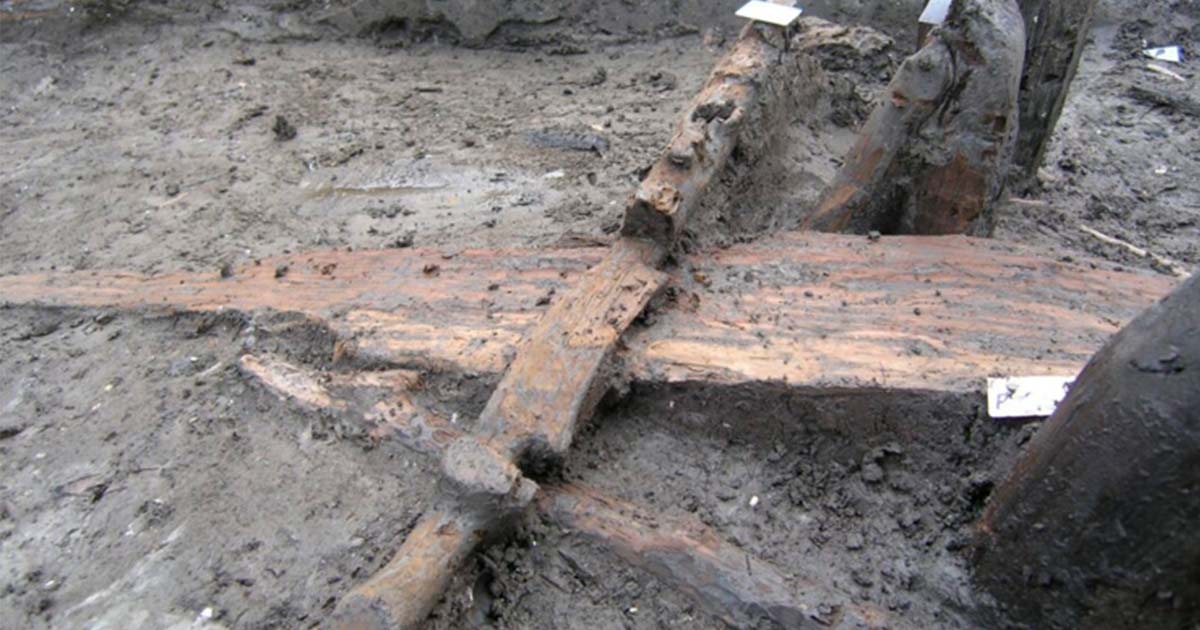3,300-Year-Old Wooden Yoke Unveiled in Northern Italy After Extensive Restoration
Following a meticulous eight-year process of excavation, retrieval, and restoration, a unique 3,300-year-old wooden yoke has been unveiled to the public. It was unearthed from a Late Bronze Age stilt house settlement in Este, Veneto, located in the northern part of Italy.
According to The History Blog report, originally found in 2015 during an archaeological survey for the SNAM methane pipeline project in the Via Comuna area of Este (province of Padua), the Bronze Age yoke did not initially gain widespread attention. Restoration of this artifact took nearly eight years, with continued research and examination involving a multidisciplinary team of experts. The Padua Superintendency showcased these wooden relics from the Atestino site at Palazzo Folco in 2023.
This particular region was chosen for excavation due to the rich archaeological remnants found there previously. To everyone's surprise, evidence of an organized Bronze Age settlement emerged. Radiocarbon and dendrochronological testing of the wooden fragments revealed the community thrived between the mid-13th and 14th century BC. This discovery marks the first-ever well-structured Bronze Age settlement in the Este area.
- Oldest Roman Military Camp discovered in Italy was Built to Fend off Fierce Pirates
- Cult Worship at the Sanctuary of Fortuna Primigenia
Designed as a head yoke, the piece was meant for tethering a pair of draft animals, likely oxen. It would be fastened around the animals' necks and secured to their horns with either leather belts or ropes. The yoke was shaped to comfortably fit around the horns of the animals. Initially estimated to be a meter long, a portion of it hasn’t stood the test of time.
- How Oxen Plowed the Way for Social Inequality
- Dying to be Beautiful: 7 Crazy Ingredients Used in Ancient Cosmetics

The Bronze Age joke, and unidentified item, and two coils of wood, thought perhaps to be bases of baskets. (ArchaeoReporter /YouTube Screenshot)
Interestingly, this ancient yoke is smaller than those from later periods, suggesting that Bronze Age domesticated cattle in the region were relatively diminutive in size. Notably, an ancient repair was observed on a section of the yoke where it would attach to an animal's horn. It appears the original user might have damaged it and subsequently made repairs by carving out a square slot for a replacement piece.
Other items found at the same location are a piece of crafted wood, whose purpose is as yet unidentified, and two coils of wood, which might have been bases for baskets, but this is currently speculation.
Historically, the Este area during the Bronze Age was marshy, prompting inhabitants to construct their homes on stilts above the water. The muddy conditions preserved wood and other organic materials, allowing them to survive for millennia. Sections of the terrain were transported in large chunks to the Central Institute for Restoration in Rome. Here, specialists worked painstakingly to treat and stabilize the waterlogged wood under controlled conditions.
The exploration and preservation endeavors continue, as there are more wooden artifacts yet to be unearthed, and ongoing analysis of the currently restored objects is still in progress.
Top image: The Bronze Age yoke in situ at the excavations in Este. Source: Superintendency of Archaeology, Fine Arts and Landscape for the metropolitan area of Venice and the provinces of Belluno, Padua and Treviso.
By Gary Manners

















